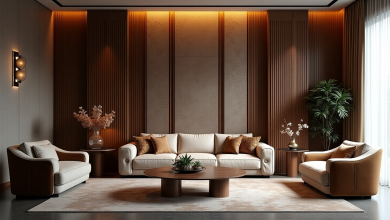A Comprehensive Guide to Metal Roof Installation

If you’re looking for a roof that’s strong, stylish, and built to last for decades, a metal roof could be the perfect choice. Known for its durability and resistance to extreme weather, it’s often considered the most stable roof design for both homes and commercial buildings. A metal roofing system is an investment that can protect your home for generations. In this guide, we’ll walk you through what metal roofing is, the different types and styles available, the installation process, and what you can expect in terms of cost and maintenance.
What is Metal Roofing?
Metal roofing is made from durable materials like steel, aluminum, copper, zinc, and tin. It’s used for homes, garages, barns, and commercial buildings because it stands up to rain, wind, hail, snow, and even fire. Compared to asphalt shingles, which may need replacing every 15–20 years, a well-maintained metal roof can last 40–70 years or longer.
Popular materials include:
- Steel – Strong, weather-resistant, and available in different coatings.
- Aluminum – Lightweight, corrosion-resistant, and ideal for coastal areas.
- Copper – Extremely long-lasting with a classic look, though more expensive.
- Zinc – Self-healing from scratches and highly resistant to corrosion.
- Tin – Rarely used for homes today, but still durable and corrosion-resistant.
Benefits of Choosing a Metal Roof
- Longevity – Lasts decades longer than most other roofing types.
- Durability – Can handle high winds, heavy snow, and hail without damage.
- Low Maintenance – Requires only occasional cleaning and inspection.
- Energy Efficiency – Reflects sunlight to help reduce cooling costs.
- Eco-Friendly – Made from recyclable materials and fully recyclable at the end of its life.
- Fire-Resistant – Adds an extra layer of safety to your home.
- Lightweight – Puts less stress on your home’s structure.
Popular Styles of Metal Roofing
Metal roofs aren’t just flat sheets of metal — they come in a variety of designs to fit different tastes:
- Standing Seam – Sleek vertical panels with concealed fasteners for a modern, clean look.
- Exposed Fastener Panels – Overlapping panels with visible screws, offering a more affordable option.
- Metal Shingles – Mimic the look of traditional shingles, slate, or wood, but with the strength of metal.
- Stone-Coated Metal – Combines the appearance of asphalt shingles with the durability of metal.
- Metal Tiles – Look like clay or concrete tiles but weigh much less.
How Metal Roof Installation Works
Installing a metal roof is best left to experienced professionals, but here’s a simplified breakdown of the process:
- Preparation – The old roof is removed, and the roof deck is inspected and repaired if needed.
- Underlayment – A protective layer is installed to prevent moisture damage.
- Flashing Installation – Flashing is added around edges, valleys, and roof features to keep water out.
- Panel Placement – Metal panels or shingles are measured, cut, and secured to the roof.
- Ridge Caps and Trim – Installed along the roof’s peak and edges for protection and a finished look.
- Final Inspection – Ensures everything is secure, aligned, and watertight.
Cost Considerations
Metal roofing typically costs more upfront than asphalt shingles, but the long-term savings in maintenance and replacement make it a smart investment. Prices vary depending on the material, style, and installation complexity, but you can expect:
- Aluminum – Around $6–$12 per square foot installed.
- Steel – Around $5–$10 per square foot installed.
- Copper – Around $15–$40 per square foot installed.
Caring for Your Metal Roof
To get the most out of your investment:
- Clear leaves and debris from the roof and gutters.
- Inspect after major storms for loose panels or flashing.
- Have a professional check the roof every few years.
Is a Metal Roof Right for You?
If you want a roof that can handle tough weather, last for decades, and add curb appeal to your home, a metal roof is a great choice. While it costs more at first, the durability and energy savings can pay off in the long run




